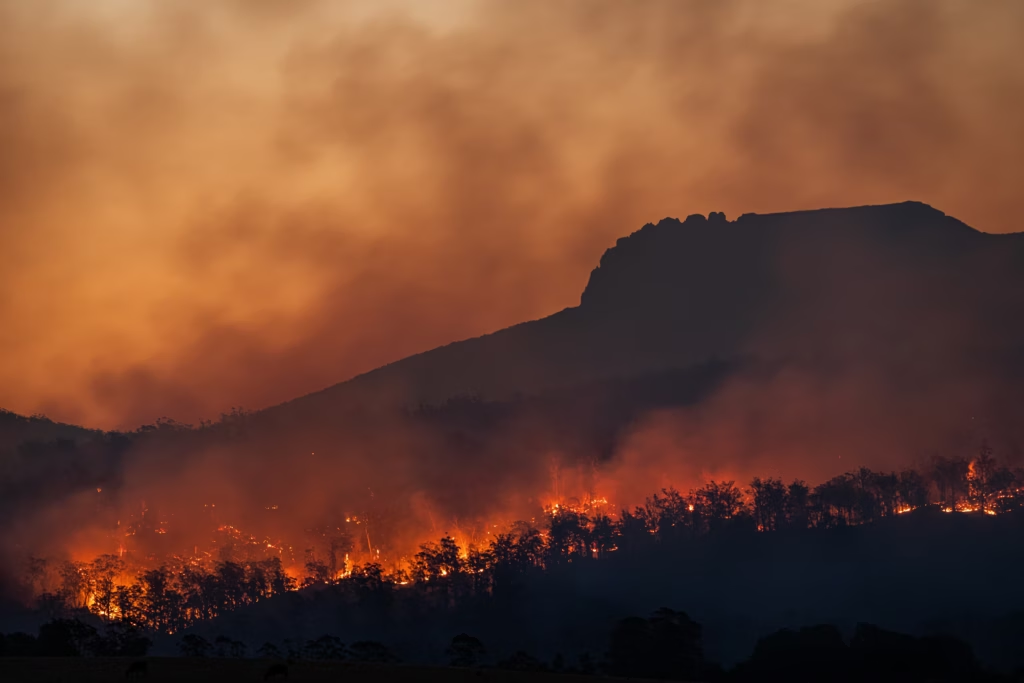New from the @EmoryCSHH News Team:
The dangers of today's methamphetamines and our limited tools to stop them, Eli Lilly's progress towards a GLP-1 pill for diabetes and weight management, Robert F. Kennedy's demands for environmental health studies for possible causes of autism.
Extreme Weather and the Power of Community-Based Sustainability Efforts — at Emory and Beyond
Natural disasters are happening more frequently. What now?
By Manju Karthikeyan
More than 16,000 structures were permanently destroyed in the Los Angeles wildfires. Another 70,000 homes were damaged in Hurricane Helene. At Emory University alone, we have received several weather advisories regarding storms, heavy rain, and tornadoes.
Some researchers have cited hydroclimate whiplash for the cause of such frequent extreme weather, where an erratic cycle of wet and dry spells affects an area. Others link the wildfires to an increase in air pollution, with pyrogenic emissionsbeing the highest they’ve ever been in California. At the same time, gusts of cold, dry air from a series of Arctic blastscaused snowstorms in Atlanta.
All these extreme events point to questions of how and why. The elephant in the room is climate change, a global threat that takes form through long-lasting changes to the weather. It is not yet clear whether scientific evidence suggests that these recent natural disasters are solely due to climate change or if other factors were involved.

The Science Behind It All: Climate Change, Humans, or Both?
“Climate change is a trend,” says Eri Saikawa, PhD, the Director of the Emory Science Talks and a Winship Distinguished Research Professor of Environmental Sciences. Saikawa specializes in modeling air pollution and its relation to climate science. Regarding these recent disasters, however, Saikawa notes that not yet enough scientific evidence to officially attribute them as a direct cause of climate change.
Nevertheless, these events are “anthropogenic,” meaning that they are influenced by people.Simply put, climate change plays a significant role in making events like wildfires more likely, especially when paired with human behavior. The release of methane and nitrous oxide into from agriculture and everyday household air pollutants are the biggest concerns for Saikawa, as fossil fuels like coal, oil, gas, and other man-made compounds are the largest contributor to global climate change.
The fire retardant used to combat the Los Angeles wildfires had high concentrations of heavy metals and chemicals. They extinguished the fires but further polluted the air in the process. High-speed winds in addition to these man-made chemicals further exacerbates the situation, Saikawa says.
Our behaviors have severe environmental consequences. Researchers assert humans are the main cause of climate change, whether it be from our carbon dioxide emissions, our excessive use of livestock and fossil fuels, or our destruction of trees. Some have even confirmed that human behavior has increased the frequency of extreme weather events.
Local Actions for Global Issues
The power of changing agricultural practices and sustainability efforts has direct effects on the climate. In particular, researchers consider promoting vegetation in urban gardening as one of the most important components affecting climate change. One study even decribes how sustainable farming and gardening practices can mitigate climate change by isolating carbon in soils, reducing greenhouse gas emissions, and promoting more biodiversity. Researchers assert this not only reduces carbon footprints in urban areas but also creates greater food security for communities in need.
This is an issue of particular concern for Jordan Hayes, a senior Human Health student at Emory University who has seen tragedies relating to climate change firsthand. “Floods and hurricanes have caused displacement in several communities” she says. “Populations across the world, like Mali, experience increased food insecurity from ice melting, decreased crop yield, and irregular rainfall patterns,” she adds.
Policy and the Future of Climate Initiatives
Many people around the country, including Hayes, are disappointed at current political moves, such as the United States choosing to opt out of the Climate Change Enactment. This decision by the new administration blocks efforts to provide greater transparency and accountability around climate change, as well as providing 2.5 million jobs for Americans working in clean energy.
In addition, the term “climate change” has become censored on several research platforms and federal agency sites. Funding for environmental science initiatives has also plummeted, with only 0.26% of research grants awarded by the NIH being dedicated to climate change.

The future for sustainability efforts looks grim. The passion, enthusiasm, and media attention given to environmental activists like Greta Thunberg, for example, is also starting to diminish. Researchers link this to eco-anxiety, where younger generations are distressed and burnt out due to their lack of control over climate change.
Hayes, however, remains optimistic about her generation’s ability to combat institutional bans and climate change as a whole. “Our generation is very headstrong and advocacy-based. If we hold political officials accountable, we can get this done”, she says.
Experts, like Saikawa, also have some hope in future generations. Saikawa implores policymakers to embrace collaboration with younger people when it comes to climate change and sustainability efforts. “While students did not create this problem, they must be given more power, not just responsibility”, says Saikawa. “Working within universities is not enough”.
Starting from each sector within nonprofits, communities, the government, and different companies, is just as important. “These problems are not going away, and the consequences will only get bigger from here. We need resources to keep the momentum,” Dr. Saikawa adds.
We must take this as a time to collaborate with each other to stop the progression of climate change— regardless of how divided the United States may be.


